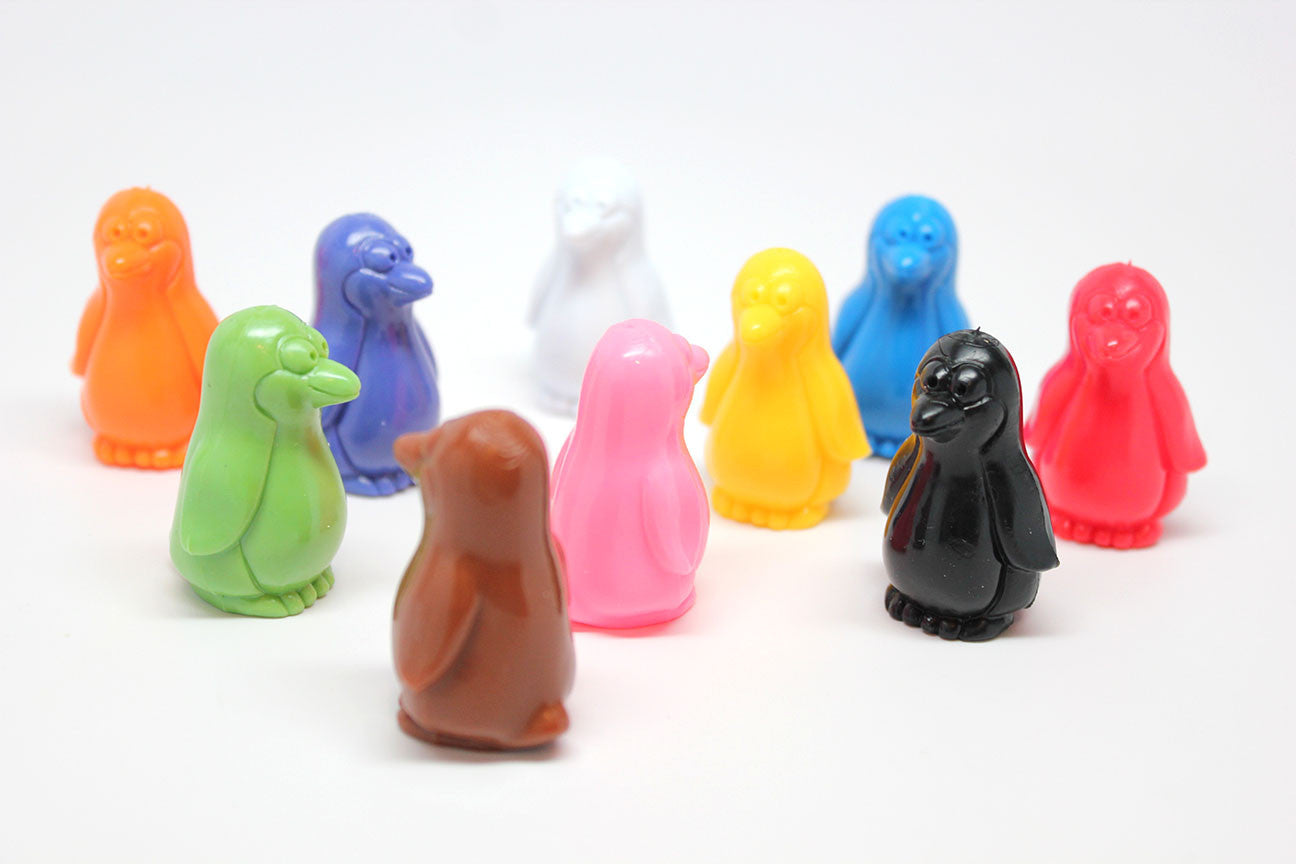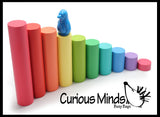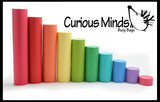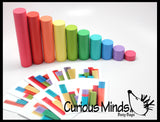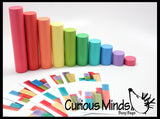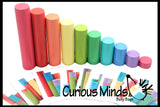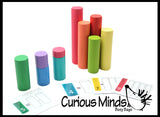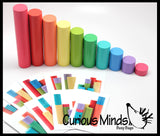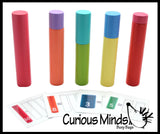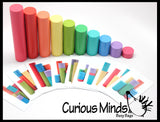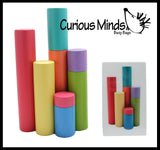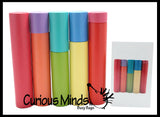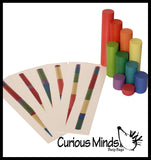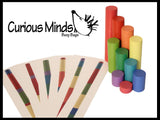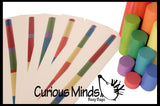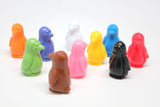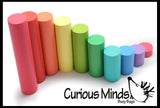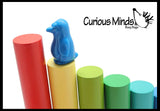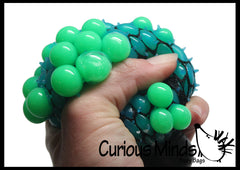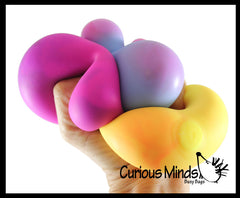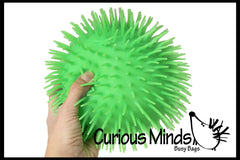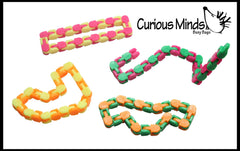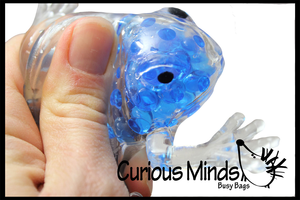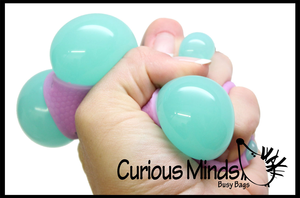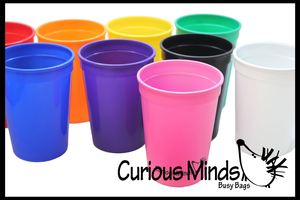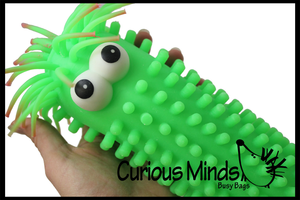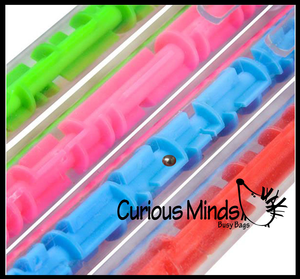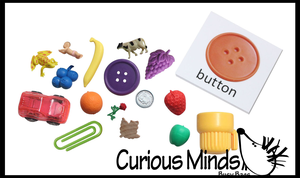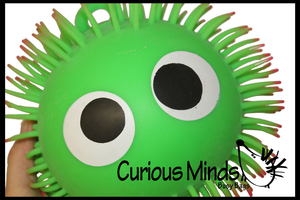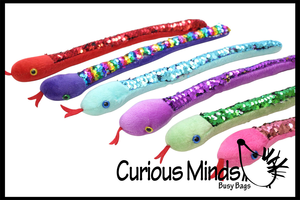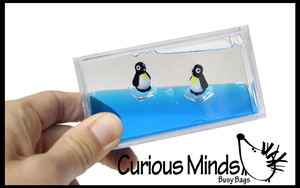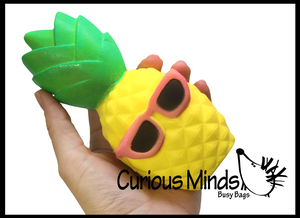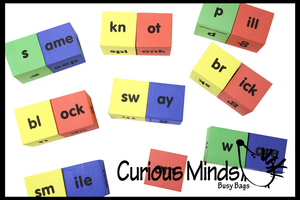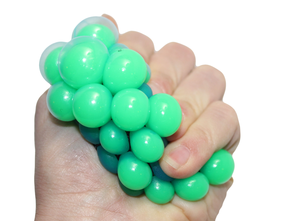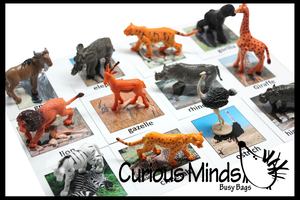LAST CHANCE - LIMITED STOCK - SALE - LAST CHANCE - LIMITED STOCK - Wooden Stair Block - 10 Colorful Wooden Blocks and Cards
This learning activity focuses on the numbers visual discrimination and size discrimination by height. These blocks are similar to Montessori Blue Cylinder work since the 10 cylindrical blocks are sized by units 1-10, each getting slightly longer than the next. The blocks are 1" in diameter and the shortest block is 1/2" and each block grows 1/2" until you get the tallest block, which is 5"
There are 6 options available for this block set.
1. A set of 10 blocks - Order these separately from the cards so you can choose which card set(s) you want with the blocks without having to buy additional block sets.
2. Add a penguin - This is a beginner set for the littlest learners and is similar to the ring stacking toy. Kids simply line up the 10 wooden blocks (ordered separately) in order of size. A cute penguin is included to help the learners self-check their stairs. I tell my boys that penguins can't fly up the stairs and they have short feet so they need a small step to get to the top. My boys love lining them up and checking to see if the penguin can get to the top. (penguin color random)
3. Tall tower block pattern Cards. You get 12 tower patterns (6 double-sided cards). These patterns make tall towers with the blocks (order separately) by stacking them up on top of each other. Kids need a steady hand and a flat surface for these towering patterns. The cards are 1.8"x8.5" and a professionally printed on 100# cardstock and laminated with 5mil lamination. These cards are classroom tough.
4. Group block pattern cards. You get 20 patterns (10 double-sided cards). These patterns stack blocks and place blocks next to and in front of others. (blocks ordered separately) The cards are 2.1"x3.5" and a professionally printed on 100# cardstock and laminated with 5mil lamination. These cards are classroom tough.
5. Math block pattern cards. This learning activity focuses on the numbers 1-10. The 10 cylindrical blocks are sized by units 1-10, each getting slightly larger than the next. Children draw a number card with a colored block, and they need to try to make other block stacks to be the same height as the block pictured in the card. For example, they could pick the tallest block, which equals 10. Kids could then build more stacks the same height by selecting the red block (the next size down, or 9 units) with the smallest pink block (representing 1 unit). So the 9+1 is the same size as the 10 unit. You can also do the 8 unit block with the 2 and so on. This is a fun way to visually demonstrate addition and subtraction principles.
How to Play:
Draw a card and pull that color block. Try to build other block towers the same height as the block. The card will show how many usable solutions there are. (the tallest block has 4 other stacks that can be the same height) - 4 double-sided pattern cards (8 challenges total). Cards are 2.6"x 2.5" and professionally printed on 100# cardstock and laminated with 5 mil lamination. The cards are classroom tough. (blocks ordered separately from these cards)
***These blocks can also be used to teach basic math visually. For example, they could pick the tallest block, which equals 10. Kids could then build more stacks the same height by selecting the red block (the next size down, or 9 units) with the smallest pink block (representing 1 unit). So the 9+1 is the same size as the 10 unit. You can also do the 8 unit block with the 2 and so on. This is a fun way to visually demonstrate addition and subtraction principles. Perfect for toddlers, preschoolers, those with special needs and occupational therapists!
**These blocks are also fun to simply line up from shortest to longest. This concept is similar to Montessori blue cylinders, brown stairs or pink tower: being able to discriminate by height.
What they are learning WHILE having fun:
- Hand/Eye coordination - Being able to line up and stack the blocks on top of each other
- Fine motor - Practicing using fine motor pincer grasp in order to manipulate the blocks. Builds hand muscles and dexterity which are essential for a proper pencil grasp.
- Visual Discrimination - Visually discriminate the blocks in terms of color and size.
- Do simple addition and subtraction by measuring blocks visually

